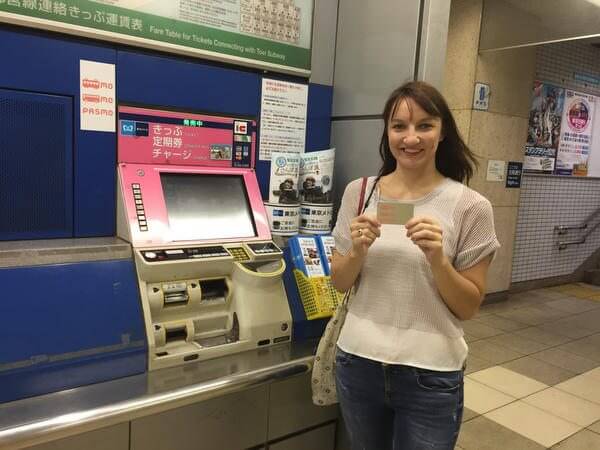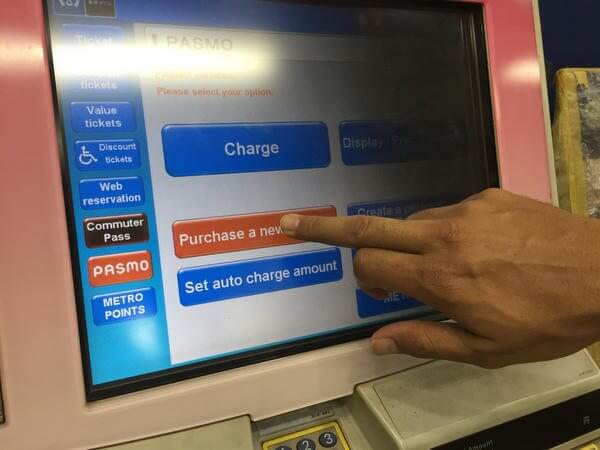How to Fly Round-Trip to Japan in Business Class for ~$100: Part 6 – The Best Ways to Get Around Japan
Signing up for credit cards through partner links earns us a commission. Terms apply to the offers listed on this page. Here’s our full advertising policy: How we make money.
Ever dreamed of visiting Japan? Credit card rewards can help get you there for a fraction of the price!
Using miles & points, I recently flew round-trip from Austin, Texas, to Japan for ~$110 in Business Class. The retail cost was ~$11,000! And for 3 weeks of lodging (including some fancy hotels), I spent ~$450!
Japan is a beautiful country, filled with a lot to see and do. You’ll find everything from high-rise skyscrapers to old temples and hot springs. I loved Tokyo’s energetic neighborhoods, shopping, and delicious restaurants. And Kyoto is a fantastic place to ride bicycles, and to explore the bamboo forest and monkey park.
Participating in a cooking class and meeting new friends was the highlight of Osaka. And a day trip to feed the deer in Nara was unforgettable! Plus, Okinawa is known for its beautiful beaches and scuba diving.

Wherever you go, you’re sure to have an amazing time!
In this part of the series, I’ll share more about how I traveled around Japan. And in future posts, I’ll tell you about how I managed lots of luggage, my flights home, and how you can do it, too!
How to Fly to Japan for ~$100 Trip Report Index:
- Part 1 – Introduction & Planning
- Part 2 – These Are My Favorite Japanese Cities
- Part 3 – Airport Lounge Access Isn’t Just for Elite Travelers
- Part 4 – The Secret to Flying Cathay Pacific Business Class
- Part 5 – 3 Weeks of Lodging for Only ~$450!
- Part 6 – Getting Around Japan (Rail System, Metro, Bus, Etc.)
- Part 7 – Shipping and Storing Luggage in Japan
- Part 8 – Japan Airlines Sakura Lounge at Kansai International Airport
- Part 9 – Flights to USA – Japan Airlines Business Class
Getting Around Japan
There are several ways to get around Japan. All of them are clean, safe, and punctual. We mainly used rail or metro, but occasionally took the bus.
Japan Rail Pass: Is It Worth It?
You may want to consider getting a Japan Rail Pass from the Japan Railways Group to save money. But be sure to do your own research and calculations to see if it makes sense for you.
Plan the cities you’ll visit before you go, and look up the train schedules and fares on the Hyperdia website. From there, you’ll be able to see how much you’ll save using a rail pass.
You can use the rail pass to travel between big cities like Tokyo, Kyoto, Hiroshima, and others. And the pass works on almost all of the Japan Railways’ routes, including the high-speed trains. But NOT on the ultra-high-speed Nozomi.
It can be a convenient and economical way to travel around Japan, because with the rail pass, you don’t have to worry about buying individual tickets. You can even reserve your seats on any Japan Railways train for free, and get unlimited travel on most of the Japan Railways buses as well.

Essentially, it’s a great deal if you’re doing a lot of intercity travel. But it’s not a good deal for local travel.
For example, within Tokyo, you can use the pass on the Japan Railways Yamanote line, which makes a circle around central Tokyo. But you can’t use it for the subways. And within Kyoto, the rail pass is practically useless.
My Experience
I opted out of the Japan Railways Pass because of my extended stays in Tokyo and Kyoto. For example, the cost from Tokyo to Kyoto was ~$100 per person one-way, and the cost from Kyoto to Osaka was ~$5.
The cost of a 7-day Japan Rail Pass was ~$250, so in my case, I saved ~$145 ($250 – $105) by paying for our trips one at a time.
For more info, checkout Thrifty Nomads’ post “The Japan Rail Pass: Is It Worth The Cost?”
And don’t forget, the Japan Rail Pass is only available to foreign visitors and Japanese nationals living outside Japan. Plus, it MUST be purchased BEFORE you leave for your trip. They come in 7-day, 14-day, and 21-day options.
Get a PASMO Card for More Convenient Rail Travel
PASMO cards can be used throughout Japan. I loved using my card because I could buy several trips in advance, and scan my card at the rail entrance. It was super easy!Most of the time, I kept my PASMO card in the zippered outer pocket of my purse, and swiped my purse. I didn’t even have to take it out, which was really convenient!
I got my PASMO card in Tokyo, which was my first stop in mainland Japan.
The machines were simple to use, because you can easily switch them to English.

To purchase a new card, just select “Purchase a New Card.”

Then you can load however many trips you want to add.
I suggest starting small, because you can always add more money later. But if you plan on only using public transportation, I would imagine the average person would take least 2 to 4 trips per day while you are in Tokyo.

The easiest way to plan your journey and understand which rail lines to take, is by using Google Maps. It will tell you the exact station (and even how to walk there), which transfers you need, and how long it will take.

The trains came very often and were super fast and easy to navigate. If I were traveling alone, I would have felt safe almost everywhere, even at night.

You can use rail travel all around central Tokyo. It was the easiest and fastest way to travel. And also a lot of fun!
The Bus System Was Easy to Navigate
The bus system is also very easy to use. We took the bus from the Hyatt to Shibuya a few times, and it was MUCH easier than I thought it was going to be.

Busses come often, and all you have to do is swipe your PASMO card and you’re done!
Taxis Drivers Are Trustworthy and Professional
Taxis are readily available, but I didn’t use them much. Mileage fares are posted in the taxis, and I never got ripped off. The drivers are very professional and even wear white driving gloves!

Biking Was My Favorite Activity in Kyoto
My favorite activity in Kyoto, and possibly all of Japan, was riding bikes in Kyoto! It was the best way to see the city at a relaxed pace. There were lots of other local commuters, and some bikes even had mini built in umbrellas to help shield the sun!

I felt very safe riding bikes in Kyoto. Traffic is not as hectic as in Paris, for example, which is another one of my favorite biking cities.

Riding in the summer in Japan was hot, and we underestimated just how hot it would be! Luckily, there were hundreds of vending machines on street corners. So we stopped regularly to refresh ourselves with cold drinks on the sides of the road!

Rental Cars Might Be Best for Larger Families & Seniors
I have a good friend who has lived in both Japan and the US for several years. Here’s what she said about rental cars in Japan:
“Having a car could makes things easier, but the tolls are ridiculous! It’s quicker to go by bullet train. It’s not like the States, where you can get off the highway to do something and then get back on (it’ll be expensive because of the tolls).The only way I would recommend driving is if you are traveling with an older person (like your grandmother) or if you have a couple of young children (like 3 years and younger).”
So if you’re traveling with small children or gram and gramps, you could consider renting a car.
Bottom Line
Traveling within Japan is safe, clean, and efficient. The Japan Rail Pass can be a good deal, but do the math to make sure it makes sense for you.
The rail system is very advanced and you can travel almost anywhere on it. Plus, it’s also very easy to navigate, thanks to Google Maps!
Buses and taxis can be another good option. For us, biking around Kyoto was our favorite activity there, and possibly our favorite in all of Japan!
And because of the expensive tolls, I’d suggest avoiding rental cars unless you’re traveling with younger children or older folks.
Editorial Note: We're the Million Mile Secrets team. And we're proud of our content, opinions and analysis, and of our reader's comments. These haven’t been reviewed, approved or endorsed by any of the airlines, hotels, or credit card issuers which we often write about. And that’s just how we like it! :)






Join the Discussion!